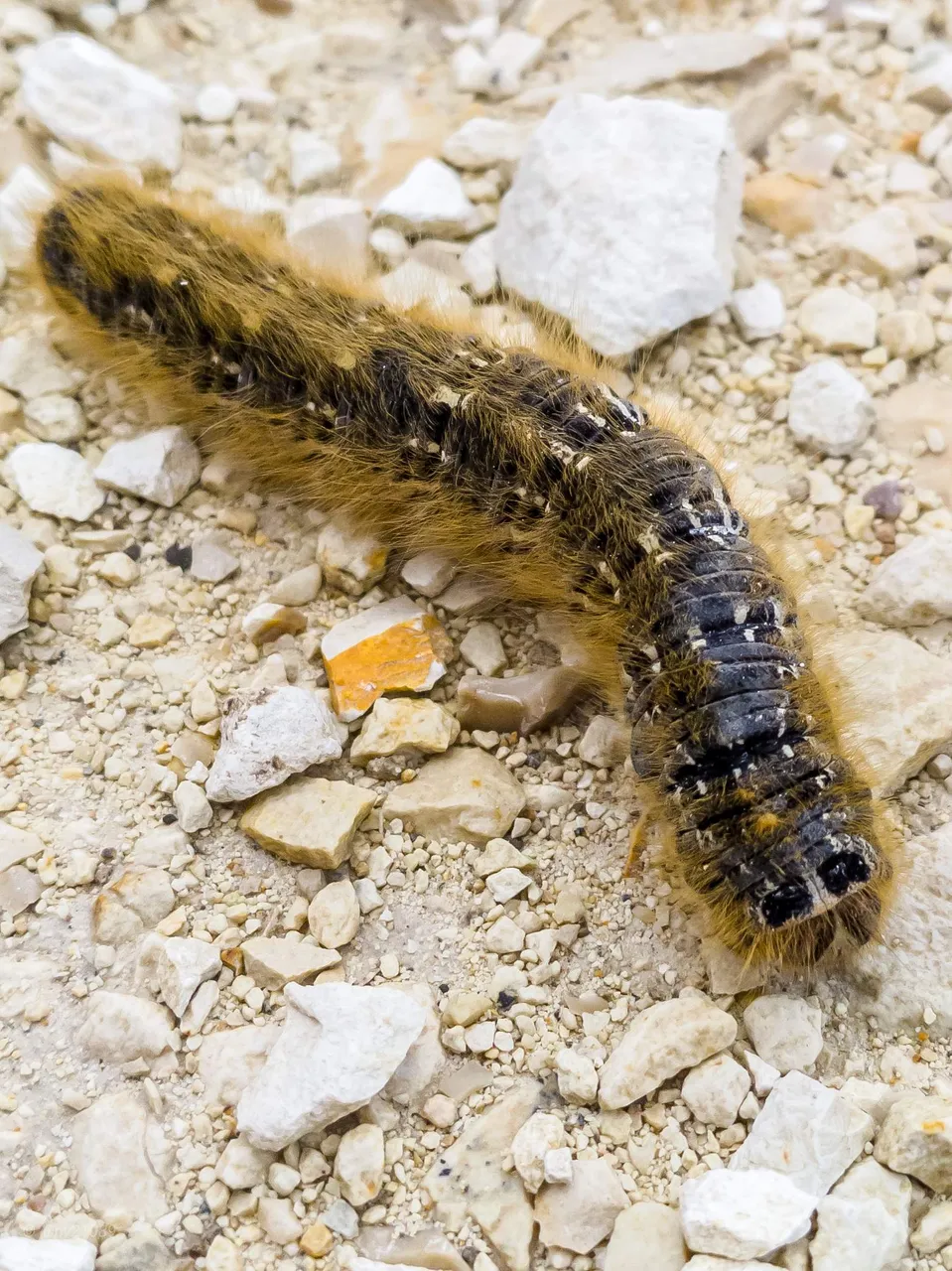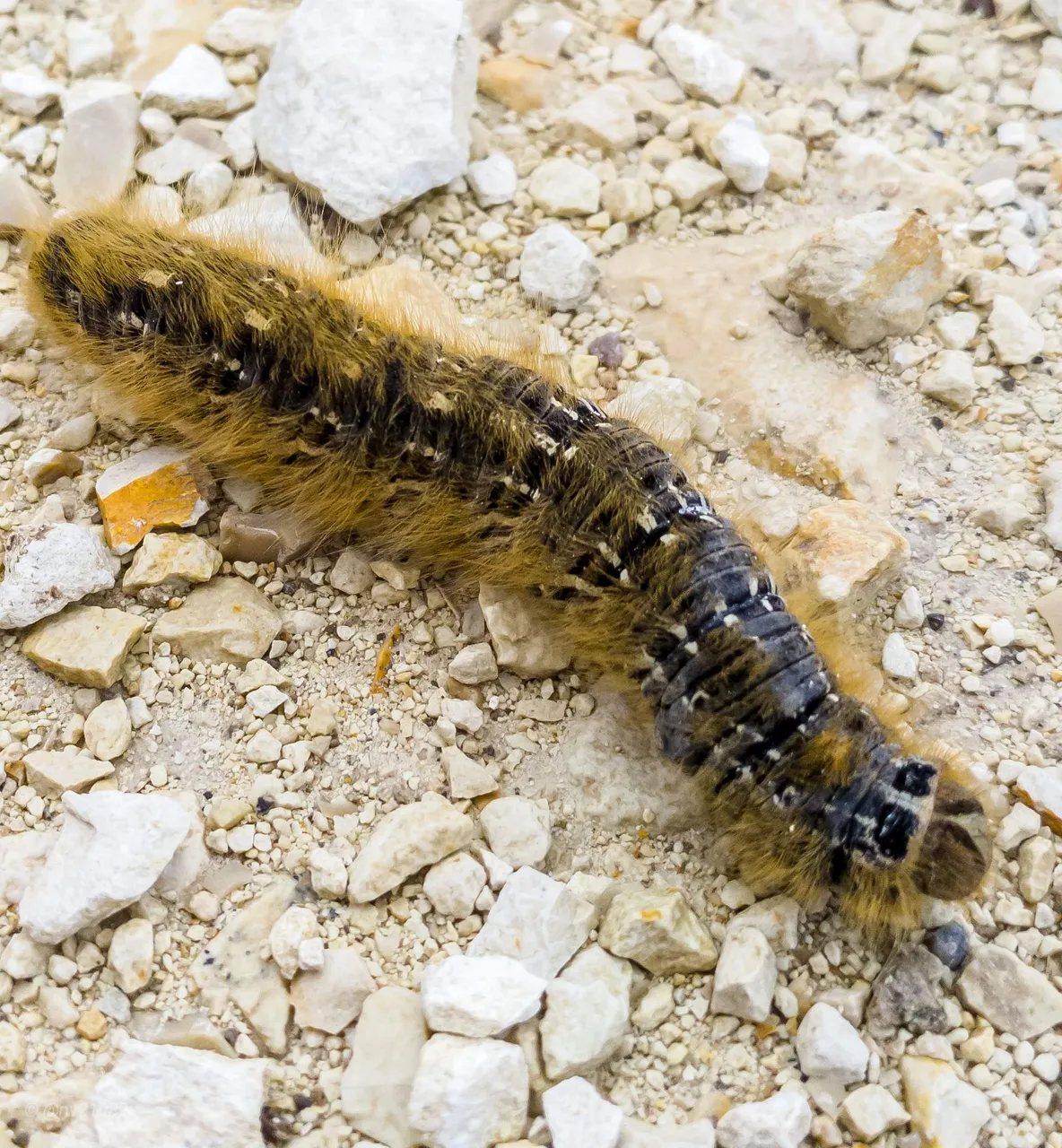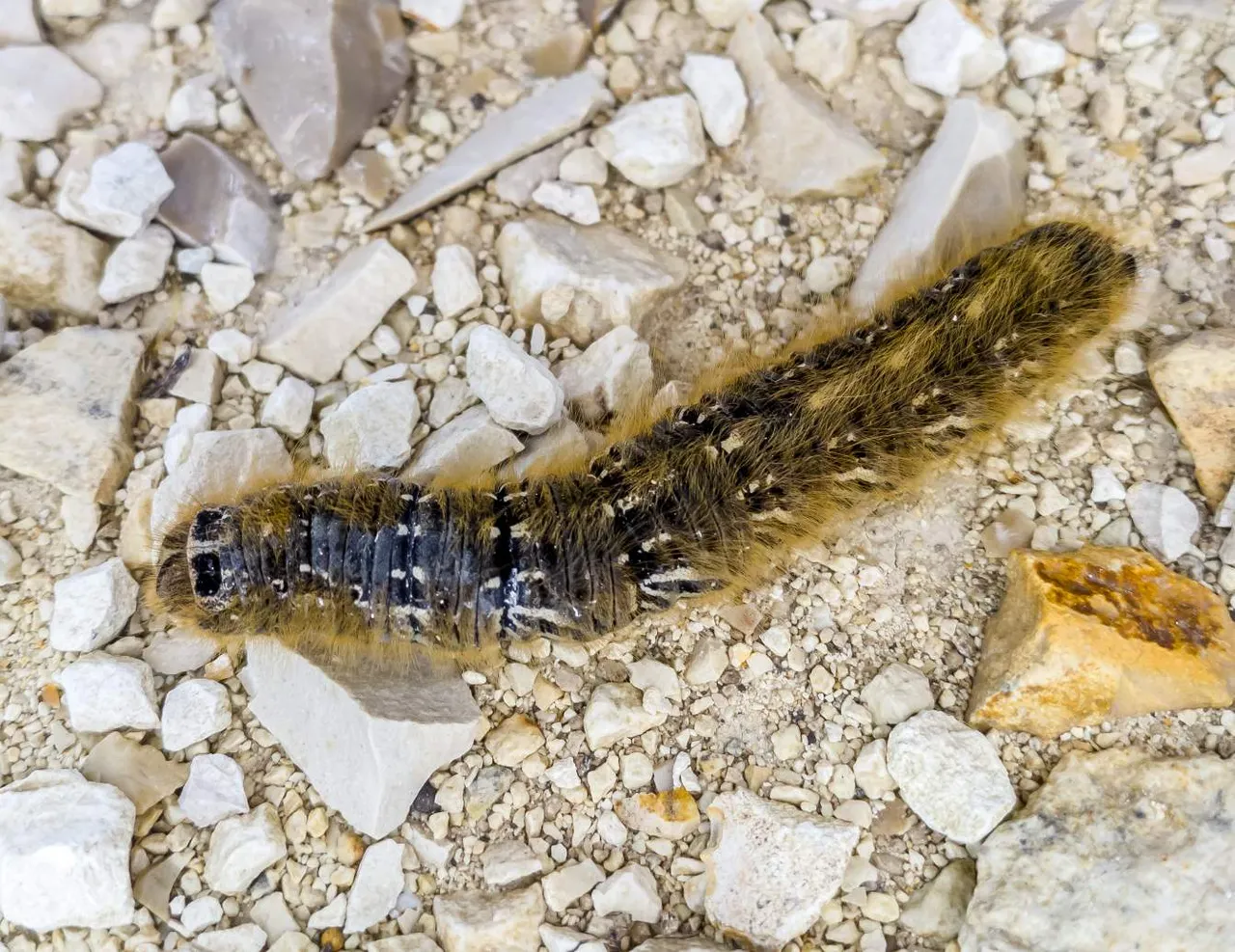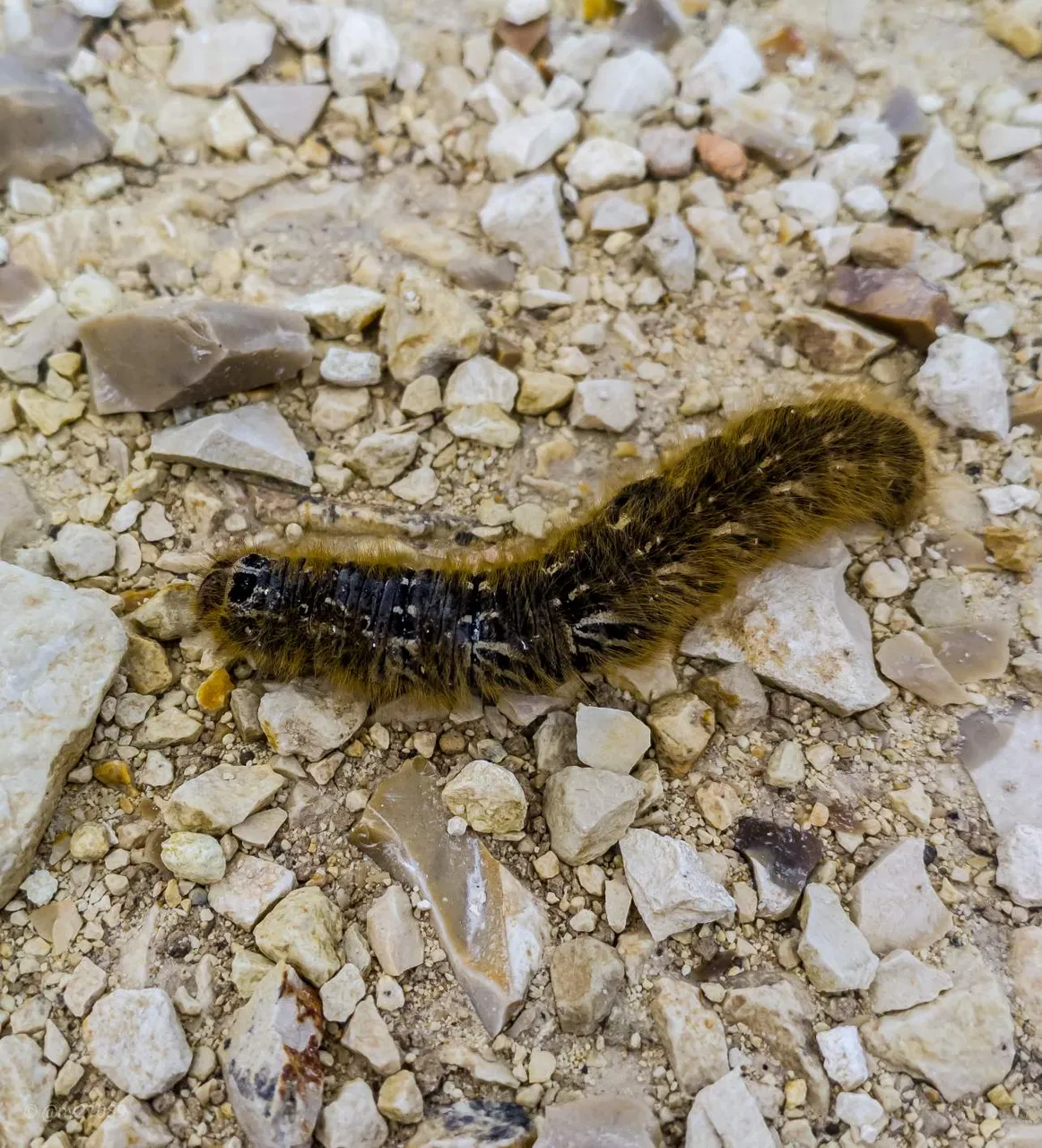Every year, with the first rains, green vegetation covers the open fields.
The carpets are dotted with white web slats beneath which live the moth of the species of the Web Bear or Ocnogyna loewii and feed on various plants.

The larvae are covered with many bristles (hairs) The hairy appearance of a bear is the source of their name.

These caterpillars are harmless although it is possible that contact with them will cause the slightest irritation in susceptible individuals.

In contrast, other hairy moths caterpillars may also cause a severe reaction.

Most of the cases occur after a meeting with the Thaumetopoea wilkinsoni.

Both are hairy caterpillars that can be seen in winter and early spring, similar in color and size.
But here the similarity ends.
The bear caterpillars live under the open field and feed on a variety of plants. When they leave the web, they scatter in every direction.
On the other hand, the Thaumetopoea wilkinsoni feed only from pine trees.
They live in groups on the trees, in characteristic patterns, especially near tasty young leaves.
When they leave the web, in pursuit of food, they follow an orderly parade one by one.
When the larvae of the Thaumetopoea wilkinsoni reach a certain size, after the second skin shedding around the month of December, the larvae, in addition to the regular hairs, grow easily broken hairs (setae).
These hairs contain venom that stimulates burning sensation, inflammation, and allergic reaction.
The hairs maintain their virulence for many years, long after the caterpillar has become a moth and died of old age.
For this reason, contact with old paralegals, remaining in pine forests, can cause various injuries even when no caterpillar is present.
The hair contact of the Thaumetopoea wilkinsoni triggers a severe allergic rash known as the "urticaria," and if they penetrate the eyes, they cause inflammation that can lead to temporary damage to vision.
Breathing the hairs can cause shortness of breath, bronchitis, and even asthma.
Ingestion may cause local irritation that causes vomiting, difficulty swallowing, and diarrhea.
Dogs or other animals who lick, swallow, or hold the caterpillars in their mouth may suffer from serious tongue necrosis, but it is easy to avoid this with little attention and to seek veterinary care if necessary.
Enjoy! And keep your pets safe 🐶🐱
LG G6+ Cam